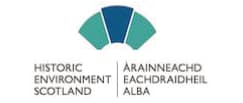Lottie Roberts and Lucy Brayson Look Back at Their Time with David Livingstone Birthplace
Right from the start we were in at the deep-end, conducting in-depth research on topics, things and people we had never heard of to aid the Curator in writing the interpretation for the whole museum (lots of other people were also involved in this process and have become mini-experts on their topics). We also began object handling straight away, helping to catalogue the Blantyre Works Library and looking out for extra special details like doodles done by children more than 100 years ago.
We were also given the task of compiling a names list of everyone who might have even a tenuous link to objects in the collection. Over the course of a few weeks, over 600 names were featured on the list – including as many of the Africans who were employed by and worked with Livingstone on his travels as we could identify and listing as much information known about each individual in order to give them equal standing with Livingstone’s more well documented European companions and colleagues. One of the people who has been the most interesting to learn about is Selim Hishmeh, Stanley’s Palestinian interpreter, who ended up moving to Scotland and working as a doctor (and stonemason) after touring America and Europe lecturing on his experiences.
On a similar scale, we were responsible for finding out more about the African objects in the collection, and identifying which objects weren’t from the areas of Africa which David Livingstone visited. We bagen by attempting to find out some of the information that was missing from our documentation by comparing our objects to those found in collections made available online by other organisations such as the British Museum, Pitt-Rivers Museum, Africa Museum and Smithsonian. Although it was not possible to identify everything, we were able to gain a greater understanding of the purpose and origin of many of these objects, which future volunteers continue to build on. Furthermore, we have has also been working on an exhibition focused specifically on Blantyre’s rich history, from the mill works to the mines and the museum which will be displayed in the refurbished Visitor Centre closer to the reopening of the museum itself.
It has been an absolutely brilliant experience and we have learned so much. There have been so many strange and interesting objects passing through the office, for example a stuffed baby caiman and a telescope with shallow, faded inscriptions that we worked to decode. As well as being let loose on social media for the first nine months, we ran the Crowdfunder campaign, which allowed the Trust to buy a magic lantern slide which is to be displayed in the museum and aid the interpretation to discuss the role of missionaries in the colonisation of Africa.
We are going to miss the Birthplace team a lot and are so grateful for all we support we’ve had from them during this last year and can’t wait to return once the museum is open again.






